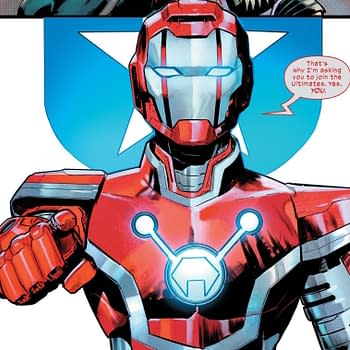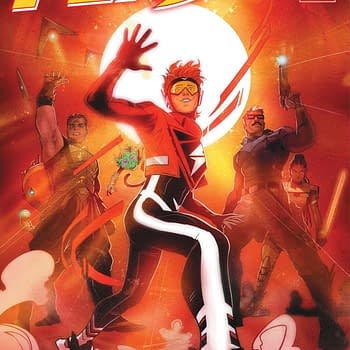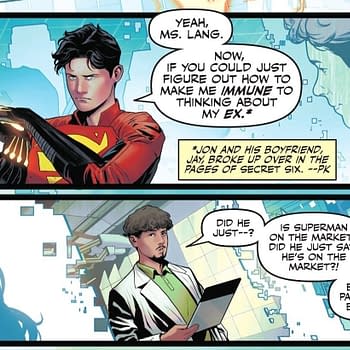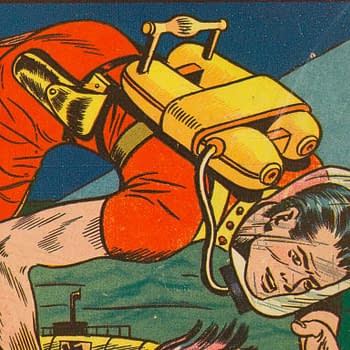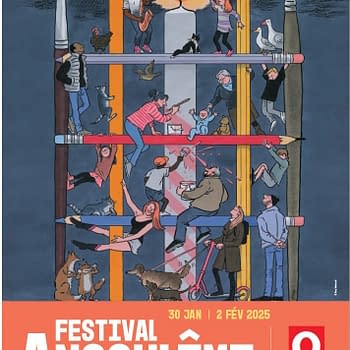Posted in: Comics | Tagged: Comics, Dr Meryl Jaffee, education, entertainment, Eric Kallenborn, Ronell Whitaker, The Comic Book Teacher
NYCC: Super Girls – Using Comics To Engage Female Students In The Classroom
John Odum writes for Bleeding Cool:
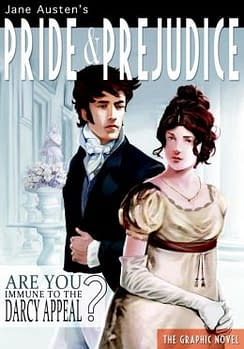
But as serious as the panelists were about using the comic medium to reach out to girls in the classroom, their agenda to permanently-and-forever cement the medium within the hierarchy of more traditional literature was equally on display. Given that the audience was full of teachers (a show of hands indicated the room was probably 80-90% teachers)… well, watch out kids, here they come for your hearts and minds. Might as well hand 'em over now.
There was universal agreement on the panel (naturally), of the value and utility of comics and graphic sotorytelling as a medium for pedagogy. Dr Meryl Jaffee of the Johns Hopkins Center for Talented Youth (and a CBLDF stalwart) noted comics' usefulness in developing language, memory, attention sequencing skills, literacy (obviously), and cognitive skills. All agreed, however, that as challenging as it may be to convince parents, school boards and parents to give over their preconceptions and embrace this undervalued tool, its that much trickier when talking about girls.
Jaffee granted that it can be a harder sell for the three quarters of English teachers who are women, simply because as a group (and in general), they haven't been as exposed to the medium and therefore have more negative preconceptions to address. She cited her own experience as an educator who would have rejected comics in the classroom outright before embracing them.
Given the fact that easily three-quarters of this audience full of teachers were women, that dynamic looks to be already on the way out.
Jaffee cited the involvement of female creators in the WWII era, as well as noting that girls were largely responsible for the manga boom, all in making the case that girls have as much historical claim on the medium as boys, and are just as commercially viable a market. She also noted that the much maligned "common core" curriculum does provide teachers with opportunities to bring comics into the classroom – and that it's a tool they should exploit.
The super-positve tone of the panel underscored just how far things have come and how quickly in terms of the representation of women in comics, the depth of the medium, and the choices available. When asked by an audience member how to deal with the oversexualized images of women in comics when presenting materials to girls in the classroom, the answer was easy; just use the good stuff, and leave the exploitative stuff at the door.
And these days, listing examples of good stuff is easy to do.
"Everybody enjoys a good story," Ronell Whitaker (www.thecomicbookteacher.com) noted, encouraging teachers to use comics that give girls an opportunity to see themselves in the story. Some kids might give a classic story more of a shot in graphic format.
Eric Kallenborn (also of thecomicbookteacher.com) gave the graphic novel adaptation of Pride and Prejudice to his students to read. A girl in his class told him afterwords, "I never read a graphic novel before. This was awesome. Do you have anything else for me?"
Now that student is reading Batman: The Long Halloween.
It was noted by panelists that all the woman creators approached for the panel were too busy to participate. The consensus was that this was a good sign.










